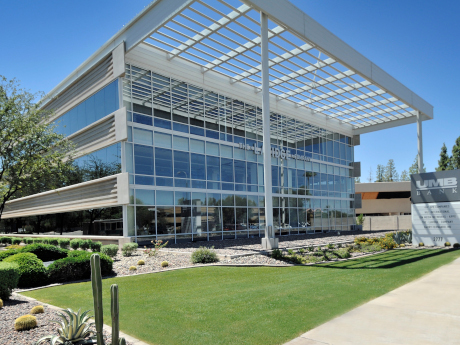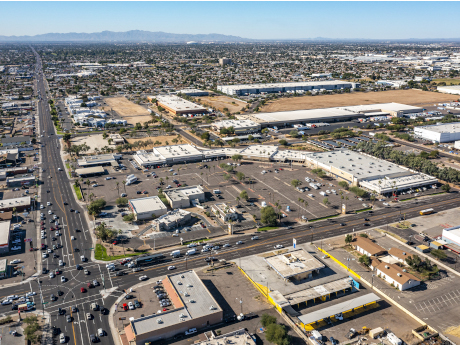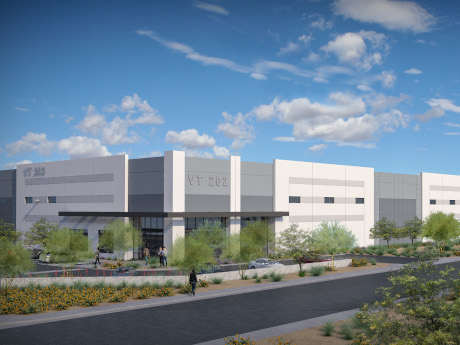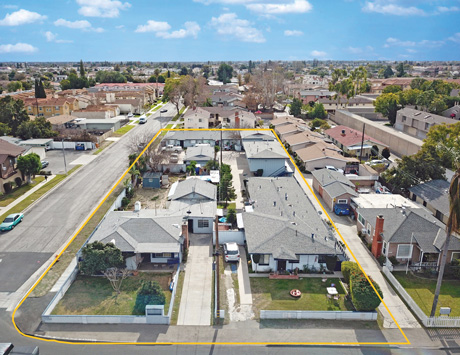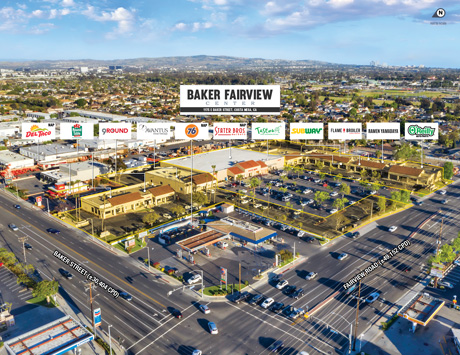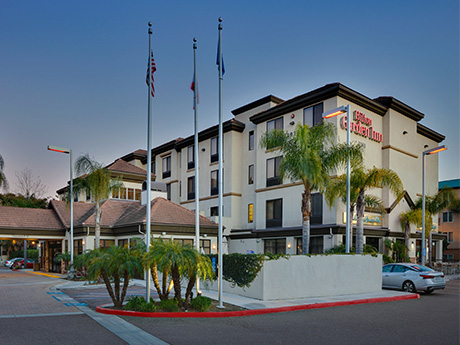By Phil Breidenbach, Senior Executive Vice President, Colliers Class A landlords are answering the call from tenants for captivating workplaces. These re-imagined environments are drawing businesses to buildings and invigorating absorption in the market. Greater Phoenix office vacancy fell to 13.5 percent at mid-year, which was a 0.6 percent drop from last quarter and 0.7 percent lower than mid-year 2021. This number also sits 1.6 percent below the national average. While 287,000 square feet of new product was delivered, more than 587,000 square feet was absorbed. This is evidence the workforce is finding its way back to the office, if not full-time at least a few days a week. The refreshing surge in absorption is driven by companies coming to the best and newest buildings — redefining Class A with amenities that compel the workforce back into the office. New buildings like 100 Mill and Cavasson are two great examples. The first, 100 Mill, was completed in the second quarter and is more than 90 percent preleased. The building will feature next-level common areas and best-in-class meeting and lounge areas. The flight to quality trend has evolved into a flight to experience trend. Companies are finally coming to grips with the reality that how they …
Western Market Reports
By Dave Cheatham, President, Velocity Retail Group For decades, Arizona’s housing and commercial real estate industry have benefitted and fed the state’s robust gains as population grew. Even during the pandemic, Phoenix welcomed more than 140,000 new residents fleeing more expensive, crowded coastal cities for what many deemed an improved quality of life. As we know, retail follows housing. Phoenix’s housing market has restarted, and these new markets will need retail to serve them. It has taken 15 years for retail vacancy rates to return to pre-recession levels in Phoenix. In the second quarter of 2022, the direct vacancy rate for retail properties declined to 6.7 percent. West Phoenix, Northwest Phoenix and Scottsdale are currently the strongest submarkets, drawing residents to fast growing cities and towns. I see retail expanding as residential development at the edges of the city continue, and agricultural land is transformed into subdivisions. With inflation shrinking household budgets, consumers are making intentional choices on where they drive and what they buy. Those retailers who are large-space occupiers will continue to focus on delivering value and lower prices to their customers. Shopping center development has been anemic in Phoenix in the past decade, as those that lease big …
By Kimberly A. Rollins, Senior Vice President, Rollins & Randall Multi-Family Group, Commercial Properties Inc. The big question on everyone’s mind is where Phoenix’s multifamily market is going. After several years of pandemic-caused uncertainty, the implications are still transforming the market. Whether it is workforce mobility, supply chain issues, or labor shortages, uncertainty and inflation have affected all areas of real estate — no place more so than here in the Phoenix Metro Area. The perfect storm of historically low interest rates, job opportunities, limited new development and a low cost of living have given rise to the housing shortage that has played out in the Valley over the past several years. We saw multifamily effective rent increase 22.7 percent year over year in the third quarter of 2021, and an average market sale price per unit of $297,697, with a 3.9 percent year-to-date cap rate, according to CoStar. Over the past 10 years, vacancy rates have dropped every year. They fell from 8.3 percent in 2012 to a low of 5.8 percent in 2021. Conversely, year to date we are seeing a vacancy increase for the first time during that timeframe, to 7.7 percent. Last year also saw the highest level of …
By Bill Honsaker, Managing Director, JLL Metro Phoenix recorded more than 7 million square feet of industrial absorption during the second quarter of 2022, setting a quarterly record for the market. The average size of local industrial deals has also ballooned, increasing 25 percent year over year to a new high of 91,095 square feet. The Southwest submarket remains the Valley’s industrial powerhouse, accounting for 68 percent of total leasing volume this past quarter. But as demand for big space continues to swell, so does the pressure on inventory. That leaves the market divided into two groups: those already in the market with land or buildings in their possession, and those who missed the land rush and must now buy out someone else’s position. In fact, across the Valley’s industrial core (roughly bounded by the Loop 303 to the west, Phoenix Gateway Airport to the east, Deer Valley to the north and the lower 202 to the south), would-be investors, developers and tenants are beginning to ask, “Where do we go next?” This dynamic has become a boon for further-out markets to Phoenix’s east and west, as well as to the south — particularly Central Arizona. With projects like Inland Port Arizona, Pinal …
By Mike Adams, Managing Director, Stream Realty Partners The state of office is transitioning to a desire for dynamic spaces. Tenants in the Orange County office market are gravitating toward assets that act and function like hotels. They are seeking out the newest buildings and the most unique office environments. This is evidenced through leasing activity being the strongest in the Irvine/Tustin Legacy and Irvine Spectrum submarkets. Employers are looking for a reason to bring their workforce back to the office and are recruiting high-caliber employees. One way to do this is through office space. Creative office space is still in high demand — and won’t likely change soon. Companies focused on employee retention want to create an “Instagram-worthy” type office environment. They are looking for office space that will create a buzz and function as a recruiting tool. Office buildings are unique assets that facilitate collaboration, culture and training. This interest in new development signifies a flight to quality of office assets — for landlords and tenants alike. Several trends related to the desire for quality include: Hotelization — office spaces that act and function as hotels Biophilic design — the concept of connecting a building with nature Proptech — using innovative technology and …
By Jordan Carter, Executive Vice President, Kidder Mathews Much like the city itself, Portland multifamily owners are no stranger to adversity — whether that refers to the weather, news media or the instability of today’s economy. There’s no doubt the rising interest rate environment will have an impact on the lending market for both refinances and sales in the short-term, but the good news is market fundamentals in the Portland metro remain solid. At 4.53 percent, our vacancy rate sits well below the national average of 4.98 percent, per CoStar. The average apartment rent is now $1,600 per month, thanks to year-over-year rent growth of 8.5 percent, which CoStar projects to remain near 5 percent for the next couple years. New construction, which peaked at nearly 13,000 units in 2018, has slowed dramatically due to legislative and policy changes that have disincentivized developers. These challenges have been magnified by elevated material costs and an arduous permitting process. Year-over-year deliveries of 4,000 units illustrate the dramatic slowdown, as they’re well below the supply needed to meet a demand of more than 10,000 new units annually. The hot single-family home market also continues to push prospective home buyers out of the market. …
By Pat Swanson, Executive Vice President, Colliers Orange County Lack of supply remains most evident in the Orange County multifamily market, with vacancies trending near historic lows at 2.3 percent. As supply dwindles, we have seen the pressure felt by investors to ramp up and hunt for the elusive value-add opportunities in this marketplace. Many profit hunters actively seek properties with upside in rent, accessory dwelling unit (ADU) potential and inadequacies as part of the existing management. A recent example is a 12-unit, single-story Garden Grove asset on a large parcel of land that was purchased below replacement cost. The Florida-based seller operated and managed the building remotely and desired to move his assets closer to home. Due to the long-distance operations, the local buyer felt they could control the property more efficiently by adding improvements to generate higher rents, while also taking advantage of the open spaces that could accommodate additional ADU units. This was a perfect fit for both parties, and we were able to execute the deal. It shows the type of value-add complex that has become highly sought after. Like the investors who flocked to Garden Grove, similar buyers have reevaluated their wants for quality Class A …
By Mike Holzgang and Brad Christiansen, Executive Vice Presidents, Colliers Portland is seeing a number of employers reassess their post-pandemic workplace. Generally, this translates to companies downsizing to account for hybrid work models, with smaller/shared workstations and more conferencing space. New development has slowed in anticipation of an increased interest rate environment, historically high construction costs and supply chain constraints. Construction timelines are protracted due to all of those issues by as much as 50 percent to 100 percent. Most of the new construction coming online in Portland was initiated before the pandemic. Notable downtown projects include two mixed-use developments named 11W and Block 216. Both of these projects will add significant office space to the city’s popular West End district. The first, 11W, should deliver this year, while Block 216 will deliver in 2023. Construction in the suburban submarkets has also been slow, but we wouldn’t be surprised if it starts to pick up within the next 18 months or so. Interest and Effect Depending on where you are looking, the market is favorable for both landlords and tenants. It is a landlord’s market in the suburban areas, particularly in those south and southwest of Portland. The Central City …
By John R. Read, Senior Vice President, CBRE National Retail Partners-West It’s critical to go back to the basics in times of ever-increasing uncertainty. It is not new news that we are currently seeing inflation at a 40-year high, significantly higher interest rates and weaker economic growth expectations, including more talks of a pending recession, which is driving uncertainty in the U.S. market. These factors require us to consider a market’s fundamentals. For attractive fundamentals, look no further than Orange County’s retail market. Orange County’s unemployment rate was 2.7 percent in April 2022, down from a revised 3.1 percent in March 2022, and below the year-ago estimate of 6.8 percent. With California’s unadjusted unemployment rate at 3.8 percent and the nation at 3.3 percent (for the same period), Orange County outperformed both metrics. The county’s leisure and hospitality sector added 6,200 jobs, with 74 percent of these added between March and April of 2022, the most job additions of any sector. Food services and drinking establishments provided most of the employment increase in the subsector, with 4,000 more jobs. Arts, entertainment and recreation also added 1,600 jobs. Orange County boasts about 1,246 arts, entertainment and recreation destinations, along with 7,993 accommodations and …
Western Real Estate Business sat down with two hotel experts to discuss what the future holds for tourism-heavy markets like San Diego. They include Robert A. Rauch, managing partner of the locally based Hilton Campus Del Mar and Fairfield Inn & Suites San Marcos and a faculty associate at Arizona State University, as well as Gary H. London, senior principal of Carlsbad, Calif.-based London Moeder Advisors, which prepares commercial market and financial feasibility studies and analyzes real estate investments for prospective investors. WREB: How is San Diego’s hospitality and tourism industries stacking up to other markets that are similar in either size or tourist popularity? London: Because of an ongoing slowdown in international travel, many American travelers divert to San Diego as a favored domestic destination. San Diego’s tourism sector has been very strong since the perceived end of the pandemic-induced recession almost a year ago. Rauch: Over the nine months spanning from July 2021 to March 2022, San Diego has been in the top five of the 25 largest U.S. markets in all three categories of occupancy, average rate and RevPAR. Hotel occupancy comes in at 67.6 percent, average rate per night is $179.85 and RevPAR (revenue per available room) stands at …


